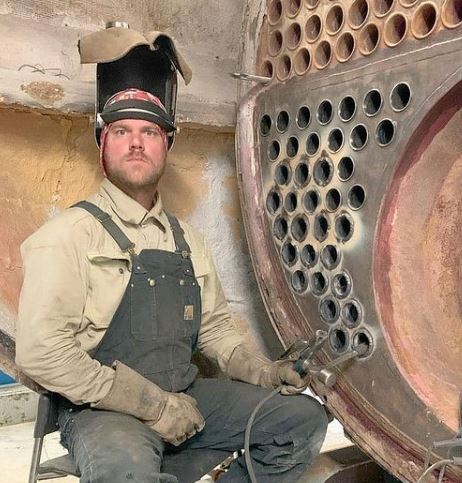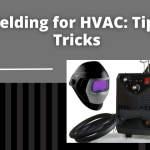Tig welding is a popular welding method often used in the construction industry due to its precision and ability to produce high-quality welds. This type of welding is performed using a non-consumable tungsten electrode to produce the weld, and an inert gas, such as argon, to shield the weld area from contamination.
Tig welding is a versatile technique used on various materials, including steel and other alloys commonly used in construction. To achieve the best results when tig welding for construction projects, it is important to follow expert tips and techniques to ensure the welds are strong and meet industry standards.

Tig Welding for Construction
This article will provide a comprehensive guide to tig welding for construction, including expert tips and techniques for achieving strong and reliable welds.
Equipment And Materials Needed
TIG welding in construction, you will need the following equipment and materials:
TIG welding machine: This is the main power source for the welding process. It supplies the electricity needed to create the arc between the tungsten electrode and the workpiece.
Tungsten electrodes are thin, pointed rods made of tungsten that conduct electricity and create the arc. The type of tungsten electrode you use will depend on the material you are welding and the welding parameters you are using.
Filler metal: TIG welding often requires filler metal to build the weld bead. The type of filler metal you use will depend on the material you are welding and the strength and appearance of the weld you want to achieve.
Shielding gas: TIG welding uses a shielding gas to protect the weld pool from contamination by the atmosphere. The most commonly used shielding gases are argon and helium.
Safety Considerations
TIG welding is generally a safe process, but there are some precautions you should take to ensure the safety of yourself and those around you:
Personal protective equipment (PPE): It is important to wear proper PPE when TIG welding, including a helmet with a face shield, gloves, and protective clothing. The helmet should have a filter lens appropriate for the welding you are doing.
Proper ventilation: TIG welding produces harmful fumes, so it is important to ensure that the welding area is properly ventilated. This can be achieved by using fans or opening windows and doors.
Fire prevention: TIG welding generates a lot of heat, which can be a fire hazard. To prevent fires, keep flammable materials away from the welding area and have a fire extinguisher on hand in an emergency.
Techniques For Construction
To get the best results when TIG welding in construction, it is important to follow these techniques:
Preparation of materials to be welded: Before you begin welding, make sure the materials are clean and free of dirt, rust, and other contaminants. This will ensure that the weld is strong and visually appealing.
Setting the correct welding parameters: The welding parameters (such as current, voltage, and travel speed) will depend on the material you are welding and the thickness of the workpiece. It is important to set the correct parameters to ensure a strong and consistent weld.
Maintaining proper arc length and travel speed: The arc length is the distance between the tungsten electrode and the workpiece. Maintaining a consistent arc length is important for producing a high-quality weld. The travel speed is the rate you move the torch along the weld seam. Traveling too slowly will result in a wider, weaker weld while traveling too quickly will result in a narrow, shallow weld.
Using filler metal appropriately: Filler metal is used to build up the weld bead and increase the strength of the weld. It is important to use the correct type and amount of filler metal for the material you are welding and the strength and appearance of the weld you want to achieve.
Adding tungsten inclusions to strengthen the weld: Tungsten inclusions, also known as “tie-ins,” are small pieces of tungsten that are intentionally added to the weld bead to increase its strength. To add tungsten inclusions, you will need to use a tungsten rod with a slightly smaller diameter than the weld bead.
Common Challenges And Solutions
TIG welding in construction can present some challenges, but with the right techniques and equipment, these challenges can be overcome:
Dealing with dirty or contaminated materials: Welding dirty or contaminated materials can result in a weak or visually unappealing weld. To prevent this, make sure to clean the materials thoroughly before welding.
Managing warping or distortion: The heat generated by TIG welding can cause the materials to warp or distort. To prevent this, use heat sinks (such as copper bars) to dissipate the heat and keep the materials cool.
Repairing defects in the weld: If you notice a defect in the weld, such as porosity (small holes) or slag inclusion (a piece of slag trapped in the weld bead), it is important to fix it as soon as possible. To repair defects, you can use a TIG welder with a high-frequency (HF) start, which allows you to start the arc without touching the tungsten electrode to the workpiece. This can help to prevent contamination of the weld pool.
What Kind Of Welding Is Used For Construction?
Several types of welding are commonly used in construction, including Stick welding, MIG welding, and TIG welding. The specific type of welding used will depend on the materials being welded, the thickness of the materials, the size and shape of the components being welded, and other factors. For example, Stick welding is often used for welding thick steel components, while MIG welding is well-suited for thin steel-welding sheets. TIG welding is often used for more precise or decorative welding applications.
What Type Of Welding Is Used For Heavy Construction?
Heavy construction often involves welding large, thick components made of steel or other metals. In these cases, Stick welding, MIG welding, and Flux-Cored Arc Welding (FCAW) are often the most appropriate types of welding. These processes are well-suited for welding thick materials and can produce strong, durable welds.
What Is Tig Construction?
TIG construction refers to using TIG welding (also known as Gas Tungsten Arc Welding or GTAW) in construction applications. TIG welding is often used in construction for more precise or decorative tasks, such as welding thin sheets of steel or aluminum or creating custom-built structures. TIG welding can produce clean, visually appealing welds and allows for precise control over the weld, making it a popular choice in many construction applications.
What Type Of Welding Does Nasa Use?
NASA uses a variety of welding processes in its operations, including TIG welding, MIG welding, Stick welding, and other specialized welding techniques. The specific type of welding used will depend on the materials being welded, the materials’ thickness, and the welding task’s specific requirements. NASA also uses other advanced welding technologies, such as laser and electron beam welding, for certain applications.
What Type Of Welding Is Best For Home Use?
The best type of welding for home use will depend on the specific welding tasks you need and your experience with welding. For basic welding tasks, such as repairing metal objects or doing small projects, a MIG welder might be a good choice, as it is relatively easy to use and can produce strong, high-quality welds. For more advanced welding tasks or thicker materials, a TIG welder or Stick welder might be more appropriate. When selecting a welder for home use, it is important to consider the specific materials and thicknesses that you will be welding, as well as your budget and your available space.
Conclusion
TIG welding is a highly precise and versatile method of welding that is widely used in the construction industry. With the right equipment, techniques, and safety precautions, you can produce high-quality welds that are strong, consistent, and visually appealing. Proper training and practice are key to becoming proficient at TIG welding, so seek opportunities to learn and hone your skills.

It’s been years since I got into welding as a side hustle. It’s been so long since Doing All kinds of welds for business and pleasure as this is my hobby. Being in this field I have learned from hands-on-experience also came to know what gears work and what doesn’t. The Tig Welder is my own platform where I use to share my experience.






Leave a Reply